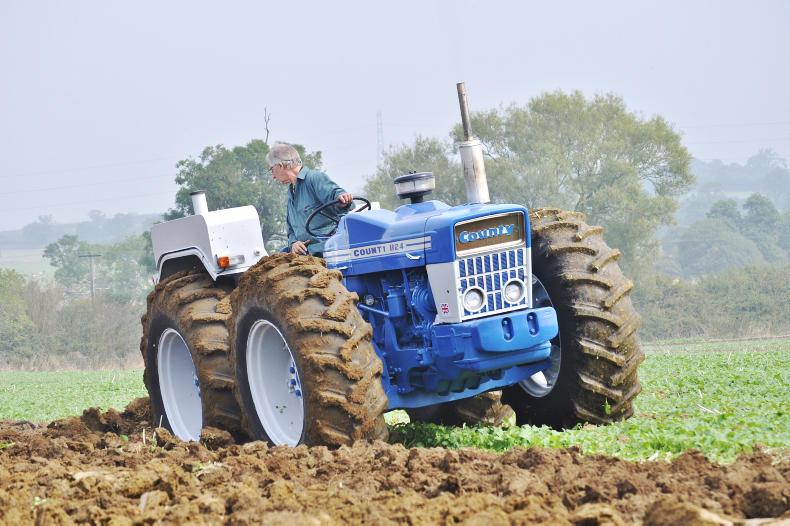It’s a known fact that specialist four-wheel drive companies like County Commercial Cars Ltd and Roadless Traction Ltd were pioneers in four-wheel drive development.
The sixties was a decade which heralded the launch of the modern equal-wheel drive (EWD) tractor, following a trend which had been established in Britain by County a decade earlier.
The County EWD system used the rear differential to distribute power between two outboard mounted bevel-gear reduction housings, incorporated into each side of the rear axle.

Two telescopic driveshafts, one on each side of the tractor, transmitted power from the bevel gears to heavy-duty hubs mounted behind each front wheel, supported by a heavy-duty front axle.
Ford 6X 5000
The development of the new Ford 6X 5000 skid-unit to incorporate the County EWD system was followed by the 1965 introduction of the County 954 Super-Six.
It was the company’s first modern six-cylinder tractor, powered by a 95hp Ford 2703E industrial engine, and it quickly proved to be an impressive performer.
Unfortunately, casting strength issues associated with the unstressed 2703E industrial Ford engine block, soon forced County engineers to modify the tractor.
This was achieved by incorporating upright extensions to the tractor’s engine side plates, fitted with heavy-duty threaded tie-bars which were attached to a plate on the top of the gearbox, and tensioned to provide additional torsional strength.
The tie-bars would become a standard feature on subsequent models after pulled threads and cracks in the castings between the engine and gearbox were encountered on tractors repeatedly used for heavy draft work.
This included the new County 1004 model, which replaced the 954 in 1967, using a tweaked version of the same 2703E engine rated at 100hp.
The County 1124
Perhaps the finest tractor produced by County during the 1960s, was the 1124.
Introduced in July ‘67, the new model featured a 113hp Ford 2704E engine fitted with a reinforced cast sump, a modified heavy-duty Ford 5000 gearbox, and an up-rated rear differential which supplied power to the rear wheels through half shafts that were almost four inches (100 mm) in diameter.

An important feature in the County EWD design was the front axle, which didn’t use a differential. This enabled County engineers to maintain a low centre of gravity while optimising ground clearance.
Another benefit of the County twin driveshaft system was that by applying the diff-lock to the tractor’s rear differential, all four drive wheels were locked together simultaneously.
The downside of the design was that the entire torque load passed through the rear differential, exerting tremendous strain on the crown wheel and pinion.
Furthermore, the twin driveshafts restrict front wheel movement, giving the County a turn-radius akin to that of a cruise ship.

Roadless
The Roadless approach to designing an EWD system was totally different. Introduced in 1968, the Roadless 115, which was based on the improved Ford Force 6Y 5000 skid unit (also adopted by County), was the company’s first EWD model powered by a 115hp version of the same Ford 2704E engine used in the County 1124.

Unlike County, the Roadless approach to producing an EWD machine followed a more traditional method, by employing a driven front axle powered by a single driveshaft, operated by a transfer box located between the transmission and the rear axle.
The Roadless 115 design employed a differential to supply power to a pair of stepped reduction gearboxes located on either side of the front axle.
This raised the driveline by 175mm, allowing the planetary reduction hubs to be incorporated within the tractor’s equal-sized front wheels, without raising the engine or the centre of gravity.
The County 1124 and Roadless 115 were arguably the best heavy-duty draft tractors money could buy in the 1960s.

Yet while they embraced similar styling, and were built using the same skid-unit powered by the same engine, underneath, they were as different as chalk and cheese.
